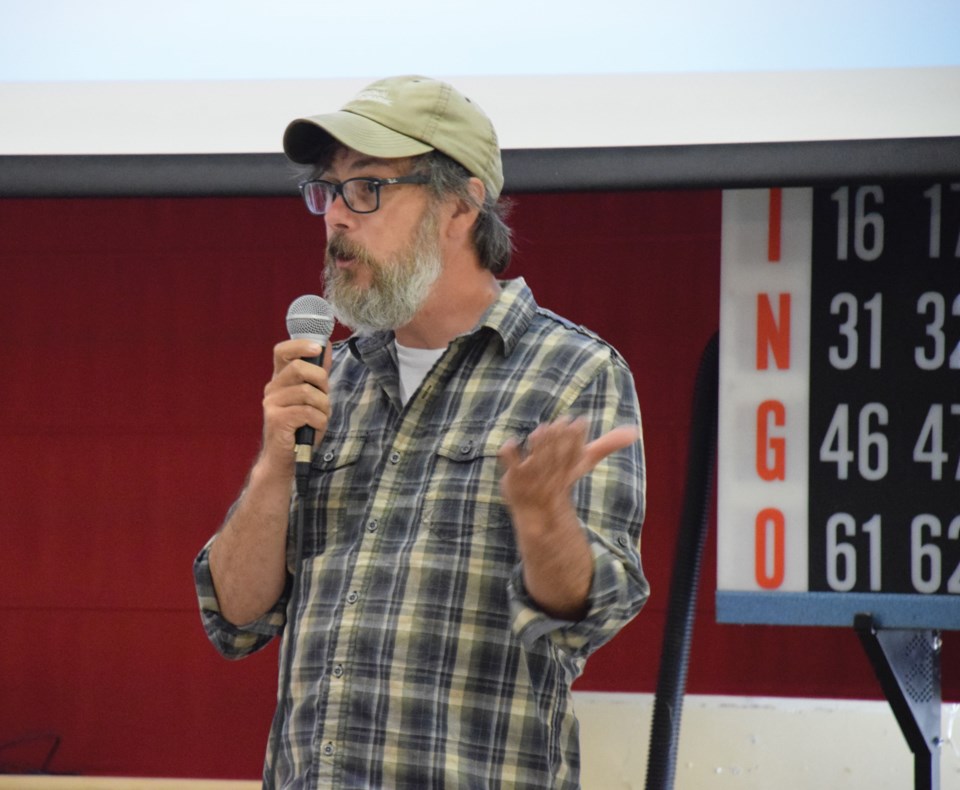Members of the shíshálh Nation gathered at the Band Hall Aug. 20 for the annual Archeology Day.
Archeology Day is a chance for the shíshálh community to share a meal with the team from the shíshálh Archaeological Research Project at the end of their field season and find out more about the project’s work, which has been underway now for more than a decade.
Archeologist Terry Clark of the University of Saskatchewan, who leads the project, told the gathering that many of the students involved this year had never been to B.C. before and it was an “eye-opening experience” for them. He also said it was a particularly tough season – they had to evacuate their camp once when it was flooded out by torrential rains, and again when a mother grizzly and her cubs got into the tents and wouldn’t leave.
Clark also thanked the community for its support over the years. “This is like a second home to us,” he said.
Clark and his students were given a special song and ceremony to, as shíshálh protector of culture Steven Feschuk said, “send them away with their spirits lifted up.”
Clark said the excavations and research were focused on an area in Jervis Inlet known as xenichen, and are part of an effort to find out more about how the shíshálh people managed resources.
“We’ve got a lot bigger this year,” Clark said, explaining that the team included experts in shellfish, plants, rock art and paint pigments, DNA analysis, and geography. “We’re looking at what happened in the past – but also with the new reconciliation agreement, resource management is back in shíshálh hands, so we want to give a baseline – this is what is was like in the past and this is what it is today.”
Clark said the work has also included interviews with elders. “We’re talking to elders about their stories of how they used resources, their experience with the rock art if they know any stories about it, [and] the villages they lived in.”
Clark told Coast Reporter that more than a dozen students from the University of Saskatchewan and Memorial University in Newfoundland as well as youth from the shíshálh Nation took part in this year’s work, and with the project growing he anticipates students from all across Canada to be involved in the 2020 field season.



